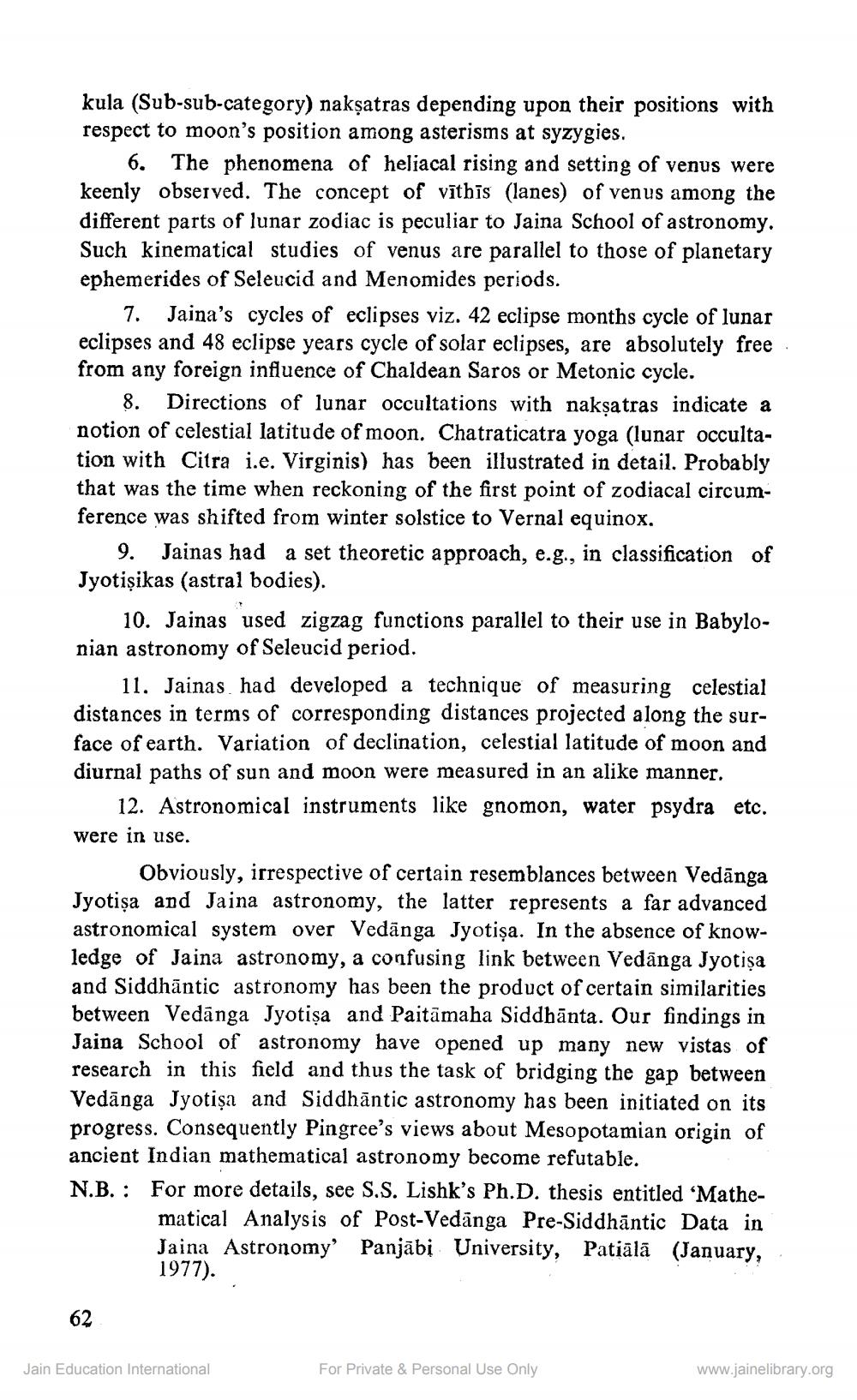________________
kula (Sub-sub-category) nakșatras depending upon their positions with respect to moon's position among asterisms at syzygies.
6. The phenomena of heliacal rising and setting of venus were keenly observed. The concept of vīthis (lanes) of venus among the different parts of lunar zodiac is peculiar to Jaina School of astronomy. Such kinematical studies of venus are parallel to those of planetary ephemerides of Seleucid and Menomides periods.
7. Jaina's cycles of eclipses viz. 42 eclipse months cycle of lunar eclipses and 48 eclipse years cycle of solar eclipses, are absolutely free from any foreign influence of Chaldean Saros or Metonic cycle.
8. Directions of lunar occultations with nakṣatras indicate a notion of celestial latitude of moon. Chatraticatra yoga (lunar occultation with Citra i.e. Virginis) has been illustrated in detail. Probably that was the time when reckoning of the first point of zodiacal circumference was shifted from winter solstice to Vernal equinox,
9. Jainas had a set theoretic approach, e.g., in classification of Jyotișikas (astral bodies).
10. Jainas used zigzag functions parallel to their use in Babylonian astronomy of Seleucid period.
11. Jainas had developed a technique of measuring celestial distances in terms of corresponding distances projected along the surface of earth. Variation of declination, celestial latitude of moon and diurnal paths of sun and moon were measured in an alike manner.
12. Astronomical instruments like gnomon, water psydra etc. were in use.
Obviously, irrespective of certain resemblances between Vedānga Jyotisa and Jaina astronomy, the latter represents a far advanced astronomical system over Vedānga Jyotişa. In the absence of knowledge of Jaina astronomy, a confusing link between Vedānga Jyotisa and Siddhāntic astronomy has been the product of certain similarities between Vedānga Jyotișa and Paitāmaha Siddhānta. Our findings in Jaina School of astronomy have opened up many new vistas of research in this field and thus the task of bridging the gap between Vedānga Jyotișa and Siddhāntic astronomy has been initiated on its progress. Consequently Pingree's views about Mesopotamian origin of ancient Indian mathematical astronomy become refutable. N.B.: For more details, see S.S. Lishk's Ph.D. thesis entitled “Mathe
matical Analysis of Post-Vedānga Pre-Siddhāntic Data in Jaina Astronomy' Panjābị University, Patiālā (January, 1977).
62
Jain Education International
For Private & Personal Use Only
www.jainelibrary.org




